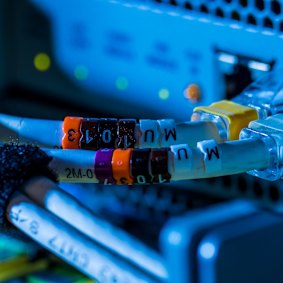NBN says two-thirds of Australians haven’t upgraded their broadband plans in five years, despite greater demand for data. Upgrading just one speed tier could give you up to 10-times faster speeds, NBN says. So upgrade to Home Fast, Home Superfast or Home Ultrafast if you want to benefit from the upgraded speeds.
Loading
The last step is making sure your home equipment can keep up. NBN recommends you update your modem about as often as you would your mobile phone, especially if it’s older than five years. Older routers with older technology, such as Wi-Fi 4, will be able to deliver speed of only about 100 megabits per second. If you want the best current speeds, of up to 1000 megabits per second, consider upgrading to a router with Wi-Fi 6 or Wi-Fi 7.
What are Telstra and other telcos saying?
Each of the providers contacted by this masthead said they will pass on the upgrades.
“We’ll be passing on NBN’s new internet speed upgrades to customers on eligible plans and technology at no extra cost,” a Telstra spokesman said.

The NBN uses different types of technology, depending on where you live. Credit:
Optus says it will automatically enable the speed upgrades in September at no extra cost, as will Aussie Broadband, Superloop and TPG.
“This is one of the biggest upgrades we’ve seen to the internet in years, and we’re making sure our customers are ready to take full advantage of it,” a TPG spokesman said. “Some modems, regardless of how new they are, simply aren’t built to support these higher speeds. That’s going to cause frustration, so we want to ensure customers understand what’s changing and how to get the most out of it.
“We’ll be contacting customers with everything they need to know, including when their upgrade is happening, how to check their modem and what to do if a new one is needed.”
What are consumer groups saying?
Loading
The advocacy group for communications consumers, ACCAN, says customers shouldn’t rush to upgrade unnecessarily.
“Don’t feel pressured to upgrade to a faster or more expensive plan unless you’re confident you’ll benefit from the extra speed,” ACCAN chief executive Carol Bennett says.
“We welcome these improvements to NBN infrastructure and speeds but also want to ensure all consumers – especially low-income households and those in regional areas – can access affordable and reliable services, not just faster ones.”
What will this mean for Australia’s broadband rankings?
Australia most recently ranked a lowly 75 on Speedtest’s global speed rankings, one place above Uzbekistan and just below Oman, Nicaragua, Venezuela and Jamaica, with customers reporting an average of 88 megabits per second. Expect this number to climb over the next few months as customers upgrade plans or automatically have their speeds bumped up.
Will there be more upgrades in the future?
Yep. NBN has announced a “Home Hyperfast” plan coming in the future that would offer speeds of up to 2000 megabits per second for FTTP connections, which would be the fastest residential NBN plan ever.
“We are actively investing in our FTTP and HFC networks to support future technologies such as AI, smart homes and quantum computing. This continued investment signals that further upgrades will follow to meet growing data demands,” NBN general manager Jane McNamara says.
“In January we announced we will upgrade the remaining fibre-to-the-node network across Australia. This investment will benefit around 622,000 homes and businesses across the country, with more than half located in regional Australia. The upgrades are expected to be completed by the end of 2030.”
The Business Briefing newsletter delivers major stories, exclusive coverage and expert opinion. Sign up to get it every weekday morning.
